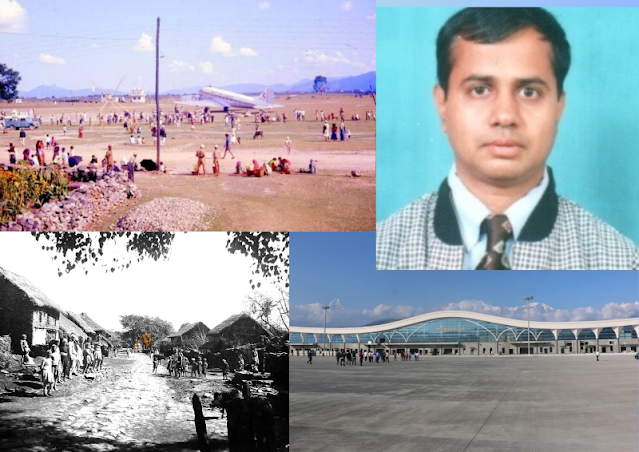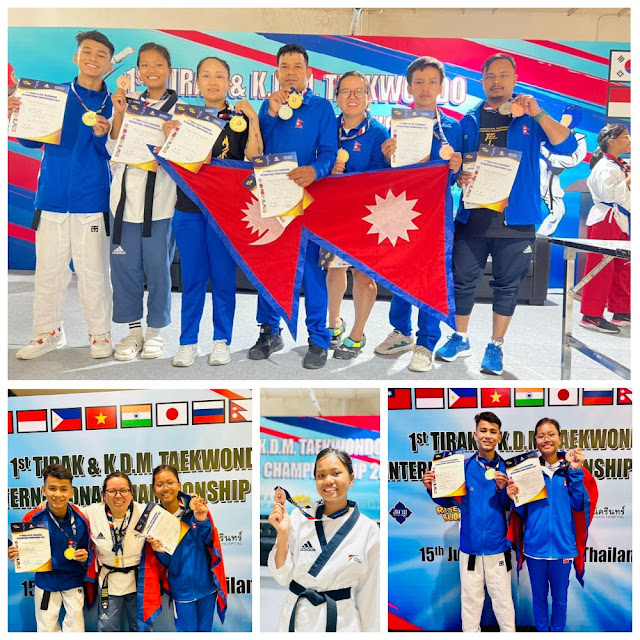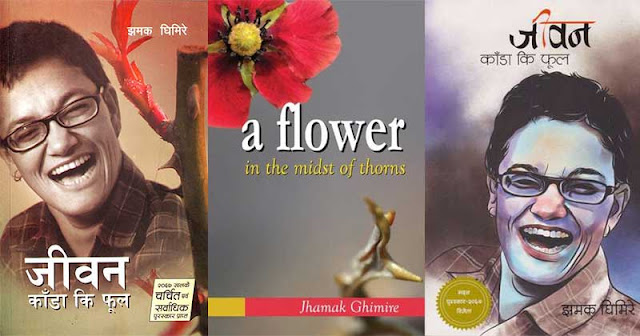I SAW MANY CHANGES TAKING PLACE IN POKHARA
By
DR. P RAVI SHANKAR
Pokhara at the foot of the magnificent Annapurnas must surely rank as one of the most beautiful cities on Earth. My association with this beautiful city has been short but sweet! I first landed in Pokhara on February 8, 2000. Before coming, I surfed on the internet looking for more information about the place. The tourist guidebooks are fond of describing Pokhara as a ‘subtropical paradise’. Pokhara is a major tourist center and is the launching pad for treks to the Annapurna region. My good friend, Sanjay, a keen trekker and photographer had described Pokhara as a ‘paradise on earth’ may be partly inclined by the guidebooks and descriptions of fellow trekkers.
Pokhara at the foot of the magnificent Annapurnas must surely rank as one of the most beautiful cities on Earth. My association with this beautiful city has been short but sweet! I first landed in Pokhara on February 8, 2000. Before coming, I surfed on the internet looking for more information about the place. The tourist guidebooks are fond of describing Pokhara as a ‘subtropical paradise’. Pokhara is a major tourist center and is the launching pad for treks to the Annapurna region. My good friend, Sanjay, a keen trekker and photographer had described Pokhara as a ‘paradise on earth’ may be partly inclined by the guidebooks and descriptions of fellow trekkers.
Many changes have occurred in Pokhara over the last eight years. Like changes elsewhere, they can be divided into the good, the bad, and the ugly. A noticeable improvement has been seen in surface transport. In 2000, we had the old Tata buses from India. Monsters belching smoke and carbon (in blatant violation of the Kyoto Protocol) they had an abnormally high ground clearance which made getting in and out difficult. While getting off you had to literally launch yourselves into space and hope to land on terra firma with touchwood, nothing broken! The bus frequency was low and the buses took their own sweet time to fill up. It took more than an hour to reach Bagar to Lakeside, a distance of around eight kilometers.
The micros have brought about a revolution
in transport in Pokhara in the 2000s much as they did in fashion in the west
many years before. The small sleek buses are easy to get into and off. The frequency
of service has improved dramatically! The mini-micros have brought more competition
hitting up the scene. The new Japanese and Korean micros have revolutionized travel
to Kathmandu. Previously travel by public transport used to take over eight
hours.
The frequent checking along the way was one of the factors responsible.
The buses really behaved like local buses picking up and dropping people every hundred
meters or so! These days you can reach Kathmandu five hours including a twenty-minute
‘chiya’ break. The hygienic at some of these restaurants requires considerable improvement.
The microbus park in Pokhara is conveniently located at Prithvi Chowk. However,
in Kathmandu, the micros start and depart from kalanki, which is a difficult
place to reach.There has been a major improvement in internet
services also. In 2000, the internet servers were all located in Kathmandu and
the cybercafés in Pokhara first dialed Kathmandu. The cafes used to charge ten
rupees per minute and the net was a luxury! Most cafes and our college used to
offer the option of putting messages in the Outlook inbox and they used to
charge Rs.10 per message provided was less than 10 kb. Today we have internet
sites based in Pokhara; the charge can be as low as Rs.20-30 per hour and access
to broadband and cable internet is increasing.
Shopping options have also improved but there is still no comparison with the capital, Kathmandu. In 2000, old Saleways was the only supermarket around. These days there are several malls all decked up to separate you from your hard-earned money. Facilities for developing film rolls and for purchasing photographic equipment have also improved. Fishtail and Pokhara color labs are the best established and offer digital development.
A very noticeable change has been the rapid
explosion in the number of schools. Nearly everyone either is running a school,
working in one, or is in the process of opening one! Education can sometimes be
very lucrative! These schools have purchased new, modern buses, and these crowd the roads every morning and evening. These ‘prima donnas’ give our aging buses
a big inferiority complex.
The lakeside city attracts tourists from all over the world. Tourists amble along the lake doing the things tourists usually do! Shopping, hanging around the lake, chilling out, gazing into the eyes of one’s beloved, and savoring local and internal delicacies. Pokhara provides gastronomic delights from around the globe. Thakali, Lekali, Italian, Chinese, Tibetan, Indian. I, however, often feel the absence of good Newari and Sri Lankan restaurants in Pokhara. Most restaurants play it safe and offer a mature of best-selling items. In most cases, this would be Nepali dal-bhaat, Indian (mainly North Indian), Italian, Chinese, and momos. Recently several restaurants have opened in Mahendrapool and Bhimsen Chowk, the business center of Pokhara.
The roads in Pokhara are usually bad and you progress along from pothole to pothole. Periodic improvements and cosmetic repairs are carried out. The layer of tar and bitumen is microscopically thin and is washed out partly by the next rain! I am often reminded of the Indian chief minister who promised to make the roads in his state as smooth as Hema Malini’s cheeks. The rains in Pokhara are usually accompanied by thunder and lightning. When coming to Pokhara along the Prithvi Rajmarga, the highway starts to deteriorate the moment you enter Kaski district!
The city has become much more crowded and Mahendrapool during peak hours may remind you of a crowded Indian bazaar. Bhimsen Chowk is so crowded with all the street vendors selling everything from Chinese-made toys to the latest mobile phones, from yellow Mustang apples to bootlegged Hindi film CDs. However, Pokhara still is a city, that goes to sleep by early night. People often bemoan the lack of nightlife in Pokhara. My very good friend, Ankush in fact is one person who had not been bothered about the lack of nightlife and goes about savoring the best Pokhara has to offer. Lakeside was said to be the only ‘happening’ place.
Pokhara Airport has changed for the better. The runway had been terraced before I came and the place was even then strictly out of bounds for the cows. The number of flights has increased. There is a television in the waiting lounge to kill time. The aircraft are all turboprops. Besides the old warhorses, the Dornier, and the twin Otters there are other birds in the sky like the Beech 1900 Ca and 1900 D, SAAB, and Jet Stream. The withdrawal of the ATR aircraft was a big blow. These giants (relatively speaking) could carry a lot of equipment and could seat 40 in comfort. The airfares have one up through the roof. In 2000, Necon Air (which is on defunct) was charging Rs.900 for a Kathmandu Pokhara ticket with a mini meal thrown in! These days fare charges have risen enormously.
The opening of the International Mountain Museum and the Fulbari Resort and Spa are two major additions to the tourist attractions of Pokhara. The Fulbari is Pokhara’s only five-star hotel and the location on the banks of the Seti River offers a panoramic view of the snow-clad Annapurna. The Ace Caps Discotheque is a good place to swing the nightway! They do a good poolside barbecue on Saturdays.
Pokhara has seen many changes in the last eight years. I have been choosy in picking the ones that appealed to me and my basic instincts. Pokhara despite all the changes remains a wonderful place to live and is increasingly becoming the place I call ‘Home’!
Thank you very much for reading this article. I hope you liked this article. I will be glad if you take a little time and make a comment about this article. Your comment is highly appreciated.
WANT TO REPRODUCE THIS ARTICLE?
All rights reserved. All the articles and
photos published in this blog are the copyright property of this blog. I allow
articles and photos to be reproduced only for information and educational
purposes. For that, you must mention the author and the blog's name. Blog: read2bhappy.blogspot.com. I would appreciate it if you inform me
by sending an email to writerlbthapa@gmail.com













.png)
Comments
Post a Comment